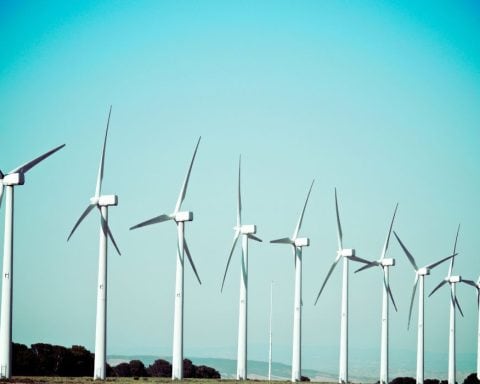For years, the United Kingdom has been the world leader in harnessing offshore wind power. Burly wind turbines poking out of the Thames estuary, the North Sea and the Irish Sea now produce more than 10 gigawatts of power – enough to meet 10% of Britain’s electricity needs. And there’s more to come. In March, Prime Minister Boris Johnson promised to triple the nation’s offshore wind-generating power to 40 gigawatts by 2030, with plans for 100 gigawatts by 2050.
But Johnson is losing his early lead. Spurred by growing electricity demand and the need to reduce its lethal pollution levels, the People’s Republic last year installed 17 gigawatts of new offshore wind power – more capacity than the whole world had produced in the previous five years. This expansion lifts China’s offshore energy capacity to 26 gigawatts, nearly half of the global total of 54 gigawatts.
These gains followed a “commissioning rush” of sustainable power projects motivated partly by China’s hosting of the 2022 Winter Olympics, which were purported to be run on 100% renewable energy. Previously, China had failed to meet a bold 2012 goal of building 30 gigawatts of offshore wind capacity by 2020.
Although offshore wind is now 30 years old, it still accounts for less than 1% of world energy production. Development has been slow because of perceived high risks, steep up-front costs and evolving environmental regulations. In China, officials have also had to overcome production-quality issues, connectivity problems and grid-capacity shortages.
Compared to the U.S. northeast coast, Canada has access to a much larger offshore area with stronger wind speeds.
-Martin Bush, a Toronto climate consultant
They persevered, because China’s electricity demand grew another 10% in 2021, and the country still depends on coal for two-thirds of its electricity. China ranks 11th on the World Health Organization’s list of nations with the worst air quality.
Happily, the International Energy Agency (IEA) reports that the potential for growth in offshore wind “is near limitless. Improved technology and steep cost reductions are putting more and more of that potential within our reach.” In 2019, the IEA estimated that offshore wind could generate 11 times more electricity than the world needs – a whopping 420,000 terawatt-hours of electricity per year. (But then, the same report predicted that China would require six years to overtake Britain as the world’s largest producer of offshore wind power.)
When news of China’s building boom leaked out, Sustainability Magazine called it “an impressive feat” that demonstrates just how underutilized offshore wind power is. While the U.S. lags behind, it has targeted 30 gigawatts of offshore wind capacity by 2030, gunning for 110 gigawatts by 2050.
It’s not too late for Canada to get in on the action. In January, Toronto climate consultant Martin Bush proposed that Ontario replace its aging nuclear reactors with offshore wind farms in Atlantic Canada, with the help of upgraded transmission lines linking Atlantic Canada with Ontario.
As Bush noted, “Compared to the U.S. northeast coast, Canada has access to a much larger offshore area with stronger wind speeds.”





